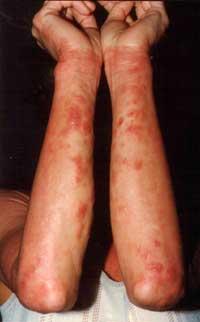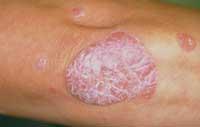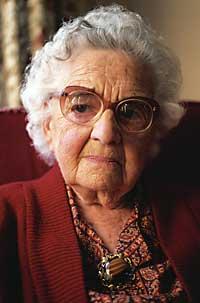Breathe through the skin
2002/03/17 Carton Virto, Eider - Elhuyar Zientzia

Some animals living in cold, aqueous environments breathe through the skin, such as some worms or arthropods. Amphibians, although they have lungs, also breathe through the skin. For this purpose, a fine skin permeable to the gases is essential and the skin is always humid.
In the case of human beings, it was known that our skin also breathes, although it was hardly taken into account. But researchers at Ruhr University in Germany have shown that the layer of skin that is oxidized from the air is ten times thicker than expected. In fact, the oxygen of the air reaches the cells located at 0, 25-0.4 millimeters, that is, the entire epidermis and part of the dermis. Until now, it was thought that skin respiration was limited to the outside of the epidermis.
The skin, vital
Epidermis, dermis, and hypodermis are the basic layers of the skin. The exterior is the epidermis. The upper cells are dead and the epidermis constantly replaces them with young new cells. Each skin cell lasts a month or a month until it is replaced and we, by rubbing or drying the skin, involuntarily remove all those dead cells.

The dermis is attached to the epidermis by means of a convex and rough surface. Wrinkles are arranged in curved lines and are as specific as fingerprints. Thanks to wrinkles, the skin of the hands and feet is not slippery and we are able to catch small objects and perform fine movements. The dermis is solid and elastic and contains nerve fibers –touch, pain, cold and heat receptors–, hair follicles, sweat glands and fat glands. At the top of the dermis, thousands of capillaries arrive in the cells, carrying oxygen and collecting waste.
The skin is the first defense barrier against the medium. The layer that wraps and holds the entire body, in addition to waterproof, acts as an antibacterial barrier and protects us against harmful sunlight. Vitamin D is generated in the skin and the skin cushions shocks. In addition, the skin helps to regulate body temperature by expelling sweat, dilation of the capillaries, and the appearance of hot blood. With sweat we mainly remove water, but also salts, urea and a little lactic acid.
Useful research to understand skin diseases

The research of researchers at Ruhr University has a great importance in the understanding and treatment of skin diseases. Many skin diseases are due to the lack of oxygen in the skin cells. For example, doctors considered that skin ulcers typical of old age were due to the difficulty of oxygen in the blood to reach it. But if the skin takes oxygen from the air, the cause is not just the scarcity of oxygen. According to the researchers, surface damage occurs when the balance between blood and air supplies is broken. Therefore, it is not advisable to cover the ulcer with salt, since the oxygen supply is reduced even more.
On the contrary, in diseases in which the proliferation of skin cells is excessive, such as psoriasis or eczema, the covering of the skin is usually beneficial. According to this study, the explanation is simple: if the arrival of oxygen to cells is avoided, they cannot multiply so easily. It seems that healthy skin is able to compensate for this lack of oxygen with the acquired blood, but the patient does not have that capacity.
Care of the skin
In general, the superficial affections suffered by young people and older people are the same, but it seems that in old age we are more sensitive. As it gets older, the skin loses elasticity and layer of underlying fat and tends to dry and break. After the age of 40, the skin begins to lose weight, dry and darken.
In any case, for the elderly or young, we all have to take care of the skin. To do this, just follow a few simple recommendations. For example, shower instead of bathing; although the bath is very healthy, the pressure of the shower water carries dirt and dead cells. And for those who are encouraged, remember that at the end of the shower spend a few seconds in cold water is good for circulation. As for soap, the most appropriate are neutral soaps, that is, with the same degree of acidity as the skin. It seems that the use of excessive or bad soaps destroys the acidic layer of the skin.

To keep skin hydrated, it is recommended to eat plenty of fruit and vegetables and drink at least two liters of water a day. Maintaining hydrated skin is fundamental, since hydrated skin is a healthy skin. Remember that the skin protects us and will do your job better if you are healthy.
However, the skin is very sensitive to heat, cold, chemical pollutants present in the air and even stress, so instead of using creams we are all few or more. It is not easy to choose one of the hundreds of creams on the market and escape the miraculous effects many advertise. Therefore, and if you have no special problem in the skin, keep in mind that the true secret is the frequency, that is, to be effective is more important than buying the most sophisticated cream than putting it every day.
Published in 7K.

Gai honi buruzko eduki gehiago
Elhuyarrek garatutako teknologia





